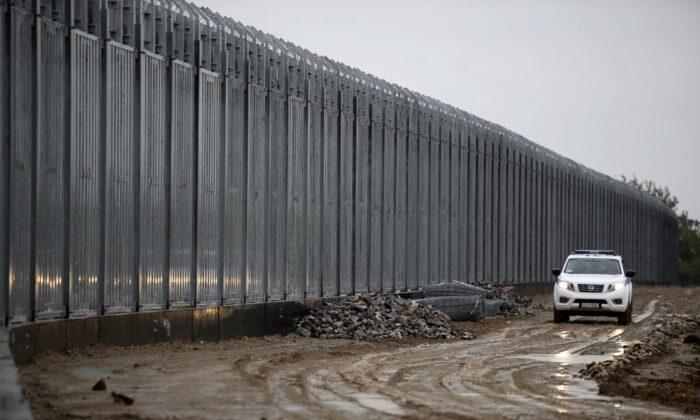Some members of the European Union are calling for the body to support renewed construction of border barriers as Europe has seen a rise in illegal border crossings in recent months.
“The task [of protecting the border] needs the support ... of European public opinion, the European Union itself and its constituent members individually,” Theodorikakos said. “It is our steadfast position that member states of first reception cannot be [the migrants’] only European destinations.”
“There must be solidarity among member-states and a fair sharing of duties ... close coordination is a must,” he added.
Greece currently has 17 miles of barriers along its border, and Theodorikakos recently announced plans to add about 87 more miles of barriers in 2023. On Jan. 7, Theodorikakos said construction is already moving forward on the first new sections of wall construction, which will cover nearly 22 miles.Illegal Crossings at 6-Year High
Much of the illegal immigrant traffic into EU countries comes through Turkey.Greece’s northeast border and fellow EU member Bulgaria’s southern border connect with Turkey. Much of the illegal crossing attempts have come over the Evros River, which forms a natural barrier between Greece and Turkey. Theodorikakos said Greek authorities prevented 256,000 migrant crossings and arrested 1,300 traffickers in 2022.
“This is the highest number since 2016 and an increase of 64 percent from the previous year,” Frontex said.
As the 28 envoys visited Greece on Saturday, Theodorikakos emphasized that Greece’s border is also the EU’s external border.
Cypriot ambassador Kyriakos Kenevezos shared Greece’s concerns about border security and spoke of the “need for understanding” from countries that don’t have external EU borders during the recent visit to Greece.
Although the UK is no longer part of the EU, ambassador Matthew Lodge also signaled UK cooperation on new border security efforts.
Dutch Secretary for Justice and Security Eric van der Burg has indicated he would be open to EU financing for more border barriers, Reuters reported.
Theodorikakos said Frontex will send about 400 more border guards to Greece to assist an existing border security force of about 1,800 members in the country.Other Walls
While Greece is expanding its border walls and bolstering its border guard forces to deal with an influx of illegal crossings, Poland is pursuing new border barriers for another reason: the ongoing war in Ukraine.Returning Migrants
In addition to rising illegal border crossings, the EU is reportedly seeing high numbers of migrant arrivals with few returning to their countries of origin.“We have a huge increase of irregular arrivals of migrants,” EU Home Affairs Commissioner Ylva Johansson said in Thursday talks with the EU’s 27 migration ministers, Reuters reported. “We have a very low return rate and I can see we can make significant progress here.”
The EU is struggling with about 20 countries that don’t cooperate in taking back their nationals who EU members determine have no right to stay in Europe. Only about one-fifth of people from those countries are successfully sent back.





